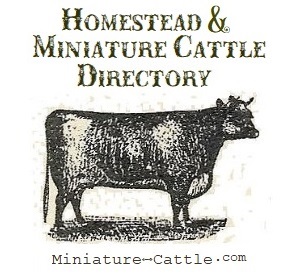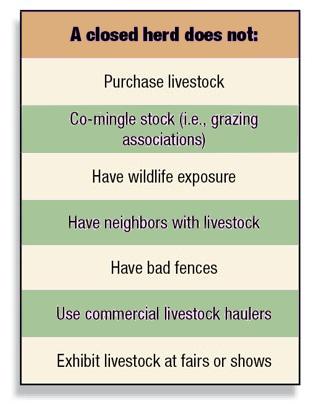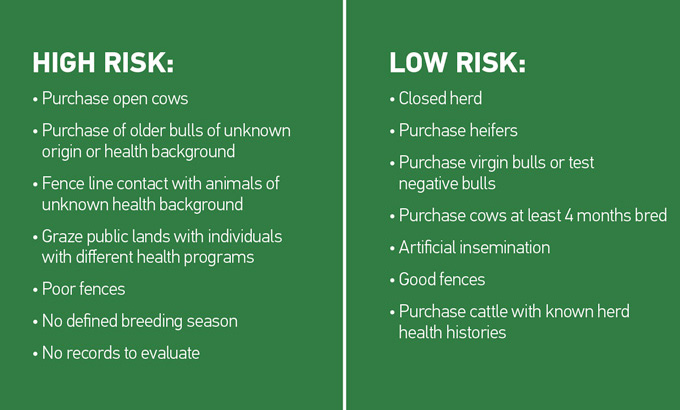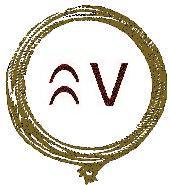
BioSecurity
Homestead Cattle Association

BioSecurity
How to Buy Healthy Cattle: Unfortunately, healthy looking cattle may carry infectious disease, and too many do. An infectious, or contagious disease is one that can be transmitted from one living being to another through direct or indirect contact.
Cattle are sold every day--unknowingly and knowingly--that carry infectious disease. Some are untested carriers, some are known carriers culled at auctions, and some cattle are healthy but newly exposed... (exposure can happen in an hour) at the sale barn, or in a stock trailer. Disease can be brought in from other farms on boots or truck tires. Frozen semen can be carrying disease the bull was not tested for.
Buyers of diseased cattle stand to lose $1000s of dollars if they bring disease home to their healthy cattle. Depending upon the disease, owners may lose veterinary fees, a calf crop, or the herd. Once in the soil, it can take years to regain a completely healthy herd again. To avoid such loss and heartache, not to mention years of one's own breeding & selection, using a reasonable measure of biosecurity is well worth the trouble.
Biosecurity may appear complicated at first, but in practice, you can develop a realistic herd health program for your small acreage. Consult with your area large animal veterinarians or agricultural extension agents. Ask about ways to keep your home herd healthy including:
Before buying cattle, ask sellers for a copy of their vaccination & testing programs. Look for cattle with disease free status, or vaccinated or tested clean for:
Sellers who rely on their reputation and repeat buyers, are usually happy to provide current test results on sale animals. If test results are outdated, but guaranteed healthy, they should welcome updated tests when the buyer pays for them. However, if a test result came back positive, the seller should expect to pay for it and lose the sale.
Transport: To cross a state line or enter a showground, cattle first need a clean bill of health on a Certificate of Veterinary Inspection (CVI) or "health certificate", which is typically current for 30 days from date of issue. Health certs provide current negative health test results on reportable infectious diseases. Note: Cattle may not be issued a health permit if they live within 10 miles of a herd found to be infected with a reportable disease and held in a biocontained quarantine.
Quarantine Quarantine means no nose-to-nose contact. It means no shared drinking water, drainage water sources, fields, facilities, pastures, tracks, paddocks, corrals or pens. It includes humans feeding with clean footwear & clothing not previously worn near other livestock, or tires of trucks that have driven through other herds of livestock. While in quarantine, new animals can be treated as needed to meet your home herd health management program.
Quarantine new cattle for 30--60 days, depending upon potentical threats known from the new cattle's place of origin. Quarantine physically as far from other cattle as possible. Quarantine any new or returning cattle you bring to your farm. This gives you time to test, treat, vaccinate and just watch the cattle for a while, since the stress of sale and transport could bring out previously un-noticed health problems. You can treat them for any internal parasites or external parasites as needed (worms, flies, grubs, lice, ticks, coccidiosis, etc).
After quarantine, introduce new cattle to your home herd over a fence at first. Eventually allow them together. Make sure they are in a large enough or separate enough areas to get away from each other if any are acting unpleasant.

Chart above from: Defining the basic needs for herd health
by Bret McNabb for Progressive Cattleman Published on 25 July 2016.
A closed herd is the ideal situation for maximum herd health. But forming and maintaining a closed herd can be challenging for large ranches, let alone small homesteads. Without understanding what a closed herd actually is, many homesteaders think they maintain a closed herd, when actually they may not.
When is a herd really "closed?" First of all, a closed herd must be large enough to produce its own replacement females. Second, it uses AI sires for bulls, and produces its own cleanup bulls. Third, all potential sources of disease-contamination are far away or are successfully fenced out. Many infectious diseases common to cattle are also found in wild ruminants; herds of whitetail, muledeer, pronghorn, elk or even bison. Deer may alternate between your farm and the neighbors’ farm. Deer species in the U.S. have been found with Tuberculosis, Cryptosporidium, Chronic Wasting disease, Salmonella, Brucellosis and Bluetongue virus (Böhm et al., 2007). Other wildlife, particularly birds and rodents, and even dogs, or hay contaminated with raccoon feces & urine can introduce Salmonella, Cryptosporidium, Leptospirosis, Rabies, and other diseases. Goats and sheep are well known as silent carrying reservoirs of cattle diseases. When run together on the same pasture, those diseases may need to checked for. Vector-borne diseases can be carried over fairly long distances by biting flies. Although disease transmission risk is lower with closed herds, it is often not eliminated. And in some cases, it isn't really closed.

The bottom line: Keep a permanent record of
your herd health management history. Record all disease or health issues,
date, treatment, vet records, and outcome. Record all vaccination dates with type of vaccine and batch serial
numbers. For any size operation, developing a disease-free herd requires a serious investment of time, money and commitment. Whether or not your homestead herd is a closed herd, once a clean, healthy herd is put together, the expense and maintenance should become easier each year. But it will always require strict protocol and vigilance to keep a disease-free herd.
Resources:
» Biosecurity for Cattle Operations, by University of Minnesota Extension Service, including Useful Form For Beef or Dairy Cattle Operations; A fillable PDF documents to download for your farm, to have in case of an unexpected or emergency situation. This 7 page guideline is filled out by you with information needed for someone to use when they come in and take over your herd care:
» USDA-APHIS-Livestock and Poultry Biosecurity Factsheet
» CFSPH: The Center for Food Security & Public Health; Iowa State University College of Veterinary Medicine.
The mission of the CFSPH is to increase national and international preparedness for accidental or intentional introduction of diseases that threaten food production or public health. Prepare for animal disease threats with secure food supply plans; becoming increasingly recognized by producers, veterinarians and regulatory officials as important resources that supply Animal
Disease Resource Lists, Zoonotic Diseases, Factsheets, Preparedness & Response info, etc.
» Livestock Biosecurity USDA Cooperative Extension, National Institute of Food & Agriculture
» Biosecurity The Livestock Conservancy
» Creating a Biosecurity Plan The Livestock Conservancy
» Livestock Conservancy Sample Biosecurity Plan can be adopted as is, or can be reviewed as a basis in formulating a custom plan for your farm.
» Biosecurity for Beef Cattle Herds Texas A&M Agriculture Extension Service bulletin
» Prep4AgThreats All-Hazards, a website with resources to help rural agricultural communities; individuals, farmers, producers and businesses to prepare for, and recover from, a number of natural and man-made threats. This website was developed from the Multi-State Partnership for Security in Agriculture.
published online March 2019
![]()
© est. 2013
Homestead & Miniature Cattle Resource Directory
![]()
part of
Homestead Cattle Association
![]()
Homestead Cattle Registry
Miniature Cattle Registry
Heritage Cattle Registry
email Homestead.Cattle.assn@gmail.com
![]()
 |
© Homestead Cattle Assn online since 2014 Bucking V Outfit, LLC. enterprise est. circa 1999 Yellowstone Co Montana accredited registry service Maricopa Co Arizona |
![]()